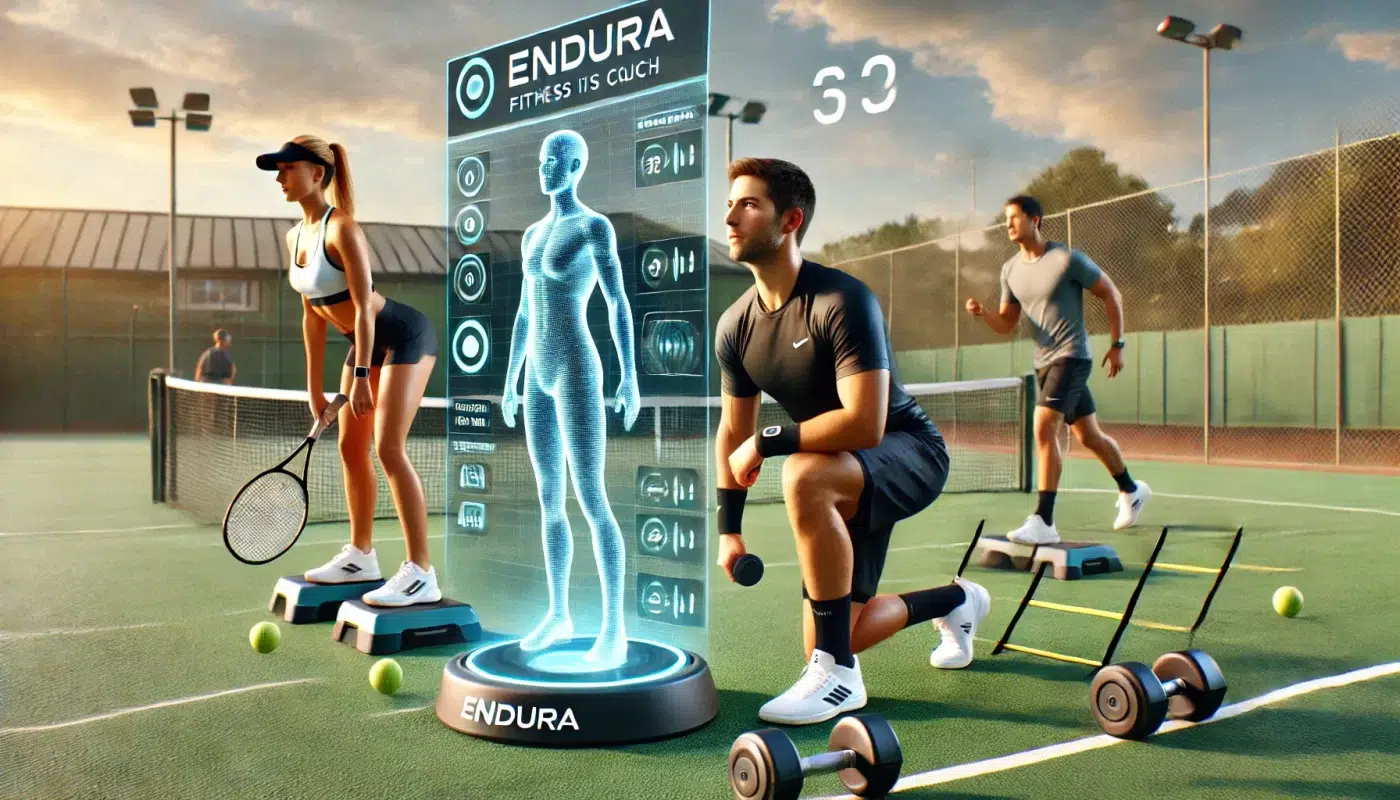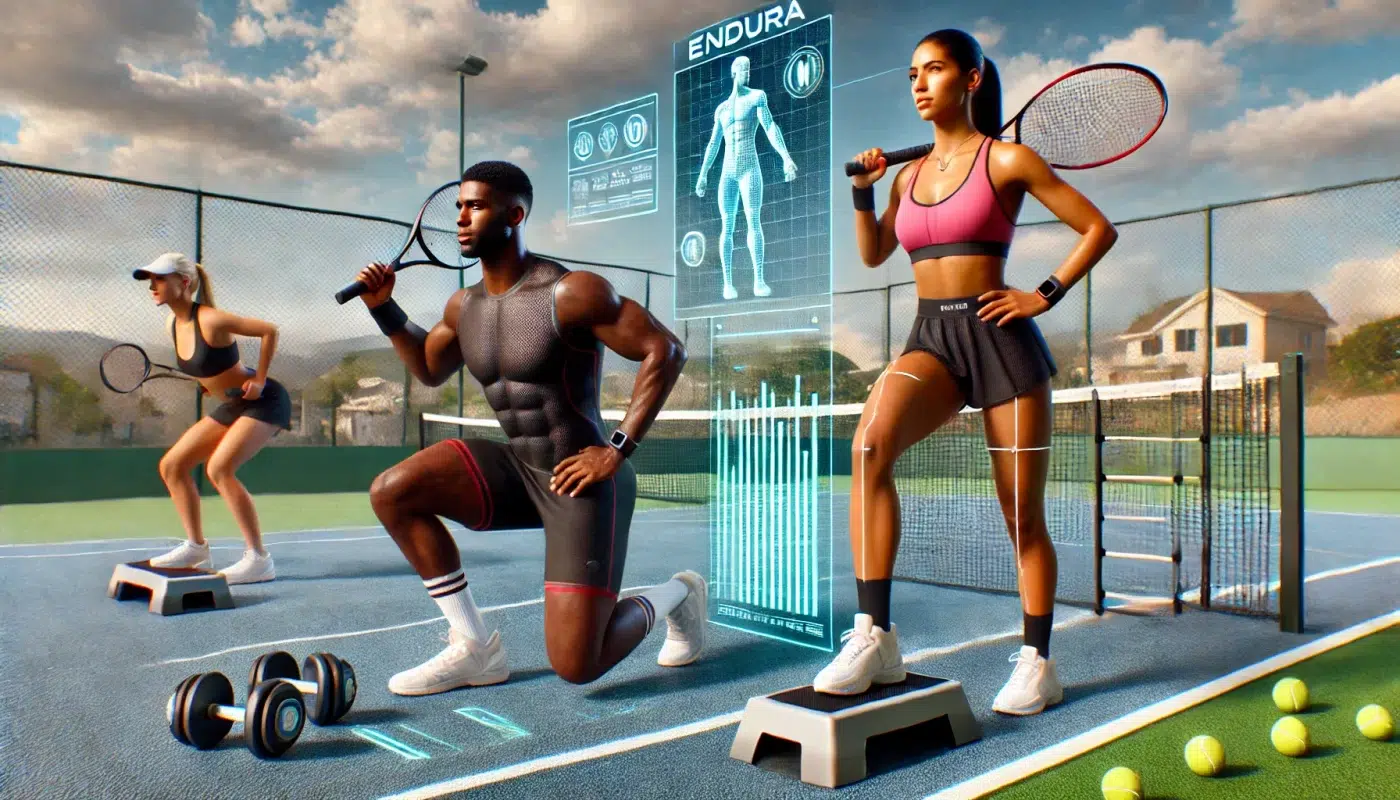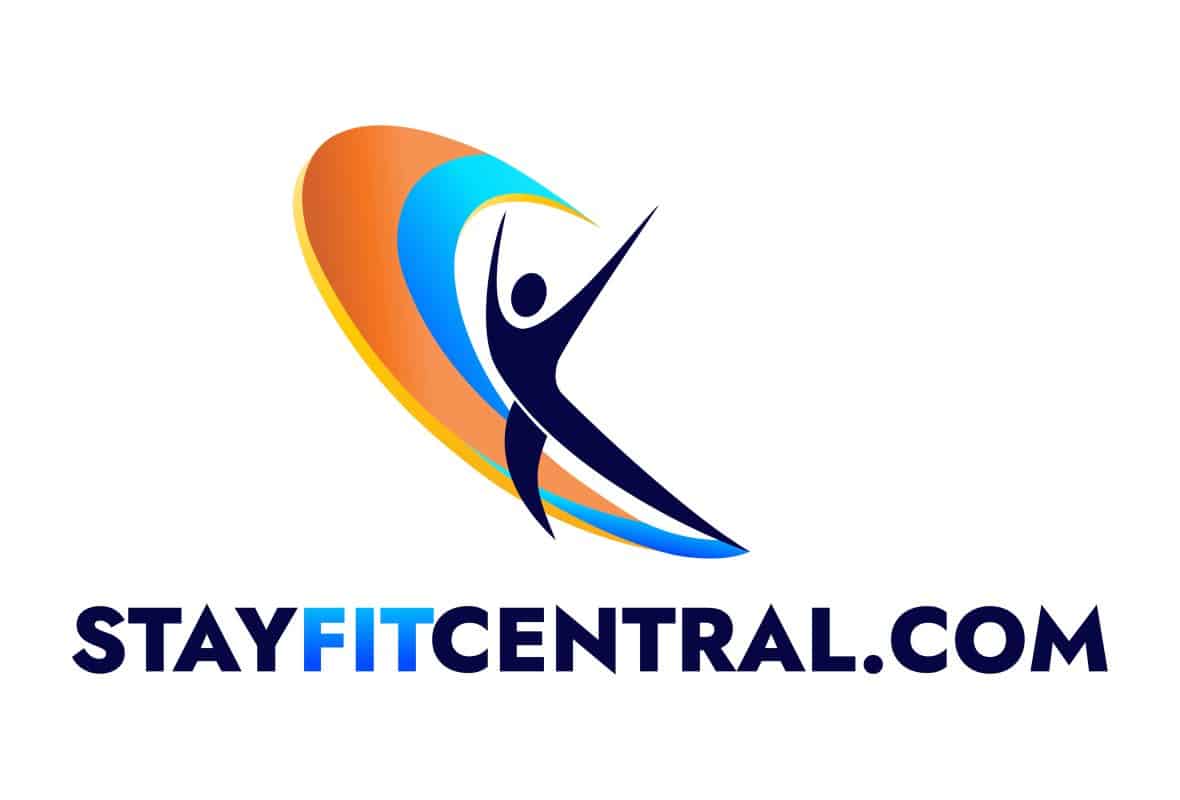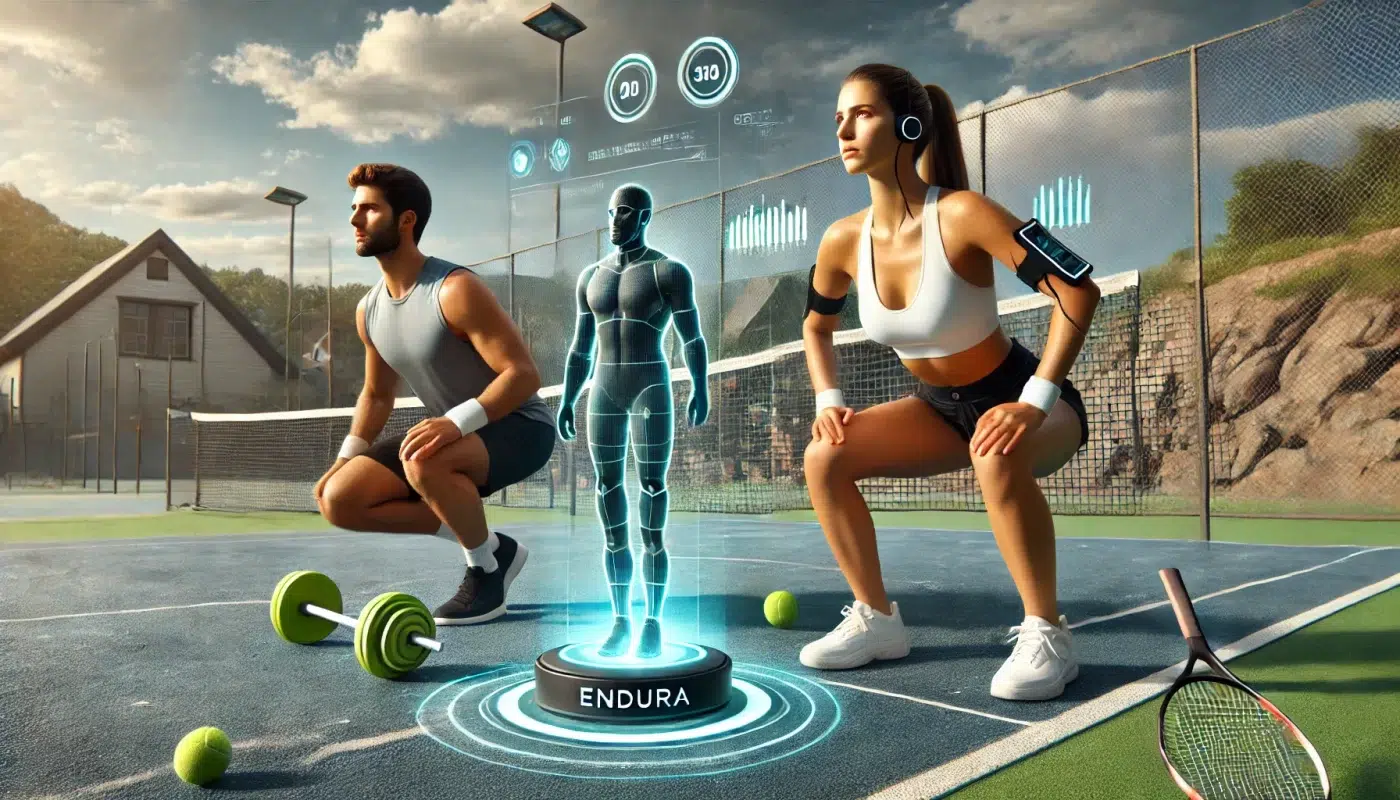AI Workouts
Professional Tennis Player Fitness – How To Learn From Their Training Methods
Every year, my wife and I are glued to the TV during the US Open, watching the best tennis players in the world push their physical and mental strength to the limit. Two of my favorite matches this year – Francis Tiafoe vs Ben Shelton and Emma Navarro vs Paula Badosa – showed peak professional tennis player fitness and how it can help you win. In their matches Francis avenged his loss last year to Ben and Emma came back from being one point away from losing to win.
Watching dozens of matches over the last 2 weeks got me wondering about what kind of strength and conditioning workouts you need to do to compete and win a grand slam.
Think about how hard that is. You have to play every other day for hours at a time, often in 100 degree heat over 2 weeks. Then there’s the stress of the millions of dollars or prize money and rankings points.
I also wondered how like you or I can workout using the same methods they do to improve our own performance on the court?
So I read all the research on the best strategies for improving strength, cardio, and overall fitness for tennis. I then taught Endura, my AI-powered fitness coach, to use this information to create fitness programs that are as good as the pros. I also made sure Endura is able to scale these workouts based on our own personal goals, experience and fitness level. This ensures the best results for us, pro or not.
In this article, I’ll share what I’ve learned about professional tennis player fitness and workouts and how Endura can help you use this info to take yours to the next level.

The 6 Most Important Aspects Of Pro Tennis Player Fitness
Strength: The Foundation Of A Pro Tennis Player’s Fitness
When we watch players like Frances Tiafoe or Aryna Sabalenka, it’s clear that being strong plays a huge role in their success. Their strength allows them to hit players off the court and keep them playing defensively throughout a match.
When I write strength I’m not talking about big muscles. That’s not what you need.
Strength in tennis means being able to generate high levels of force and power when you serve and return your opponents’ shots. Watch players who consistently service above 130 miles an hour. Sure, technique plays a big role. But their ability to generate lots of strength and power from their legs through their core and upper body is important too. This is what gives Tommy Paul, who’s not a very big guy his edge. Same goes for Naomi Osaka who uses her strength and power to hit 127 mph serves.
How strong are these players? I couldn’t find any specific numbers but there is research that shows professional tennis players typically aim for strength benchmarks like deadlifting 1.5-2x their body weight for men or 1.3-1.7x for women. If you don’t currently lift weights this may seem unattainable. I’m here to tell you it isn’t. With smart training this is possible for most every guy and girl. Without spending hours in the gym every day.
How Endura Can Help You Get Stronger
With Endura, you don’t need to guess how to build this kind of strength. It does that for you. Every tennis focused workout it creates is personalized for you and will use the right exercises for your needs. This is likely to include movements like squats, lunges, planks, overhead presses, and rotational exercises to build strength and power throughout your body.
Your workouts will focus on doing 3 or more sets of 3-6 reps per set which is the optimal range for strength and power. Here’s an example strength workout Endura designed for a tennis player who’s been lifting for 4 months.
- Dumbbell split squats – 4 sets of 3 reps per leg per set
- Overhead dumbbell presses – 4 sets of 5 reps per set
- 1 handed kettlebell swings – 3 sets of 5 reps per arm
- Dumbbell bent over rows – 3 sets of 5 reps per set
- Medicine ball slams – 3 sets of 6 reps per set
This workout helps build strength in all of the muscles you need to be strong and powerful for tennis and only takes about 30 minutes to complete.
With consistent strength training, you’ll find yourself hitting harder, moving faster, and feeling more stable on the court. Whether you’re playing a friendly match or competing in your local league, this added strength will give you a noticeable edge.

Speed and Agility – How It Helps The Pros Get To Every Ball Faster
Watching players like Novak Djokovic glide across the court is like watching a well-oiled machine. His ability to change direction on a dime, sprint after a drop shot, and recover to the baseline in a matter of seconds is no accident. Speed and agility are absolutely essential in tennis, especially on the hard courts of the US Open.
Top players can sprint 20-30 meters in around 3 to 3.5 seconds for men and 3.5 to 4 seconds for women. That kind of speed allows them to chase down even the most well-placed shots, turning defense into offense in the blink of an eye.
How Endura Can Boost Your Speed and Agility
Endura understands the importance of speed and agility in tennis and can help you develop these skills with a range of tailored workouts. Using a combination of exercises like plyometrics – jumping up and down and from side to side as fast as possible – and sprinting short distances over and over, Endura crafts sessions that mirror the explosive, quick movements you need on the court. By incorporating these into your regular routine, you’ll not only move faster but also with more precision and control.
Here are a few types of exercise Endura uses to improve speed and agility.
- Doing sprints for distances ranging from 10-100 meters
- Plyometrics like jumping up and down and from side to side on one leg as fast as possible and broad jumps.
Doing these workouts with Endura will make it possible for you to sprint to a drop shot and still have the energy to get back to the baseline in time for the next rally over and over without getting the least bit out of breath.
Endurance: Outlast Your Competition
The US Open is a marathon and a sprint. Players face grueling conditions, often playing five-set matches that can last up to five hours. To compete at this level, cardiovascular endurance is critical. Players like Djokovic and Nadal are known for their ability to maintain high energy levels throughout these long matches, thanks to years of endurance training.
VO2 max – a measure of how much oxygen your body can use during intense exercise that shows how fit and strong your heart, lungs, and muscles are – is a common benchmark for endurance. Professional tennis players typically have VO2 max levels that are higher than 90% of the population. This allows them to keep running, hitting, and strategizing well into the final sets of a match.
Your’s can be this high too, or at least significantly higher if you don’t currently do much cardio exercise, things like fast walking, jogging, and cycling for 30+ minutes a workout. When it comes to improving your endurance for tennis, consistency and time are most important. You want to get your heart rate up to a level where it’s possible but not easy to have a conversation during your workout.
Endura makes creating these workouts easy so you don’t have to worry about things like calculating your target heart rate or which type of cardio will benefit you the most.
How Endura Can Improve Your Endurance For Tennis
Endura has the tools to help you build your endurance just like the pros. Through cardio conditioning programs that mix steady-state exercises (like running or cycling) with high-intensity intervals (repeatedly going all out for a minute or less followed by equal or less rest), you’ll build the stamina needed to last longer in your matches. Endura will also figure out whether you should do your cardio workouts by walking, running, cycling, or something else, depending on your own needs and goals. All you have to do is the workouts.
Here are a few examples that Endura created for tennis.
- HIIT workout on a bike – sprint 30 seconds, pedal slowly for 1 minute, repeat 10x.
- Run and walk quickly as far as possible in 90 minutes.

Flexibility and Mobility: From Serena’s Splits To Alacarez’s Hips
Being flexible and mobile – for example being able to bend over and touch the ground – is very important if you want to improve your game. Think about how Djokovic, Coco Gauff, and many other players are able to slide on a hardcourt like its clay, often going into a full split to return a shot. Another example is having super mobile shoulders that can easily go through the proper service motion to hit fast serves.
Being mobile and flexible can also help your body stay limber and healthy so you can spend your time on the courts, not at physical therapy.
How Endura Can Help You Improve Your Flexibility and Mobility
Endura incorporates flexibility and mobility exercises into your tennis training program to help you move more fluidly and reduce the risk of injury. Using a combination of exercises that use your body weights and additional weight with things like bands, dumbbells, and kettlebells, Endura ensures that your body is prepared for the rigors of tennis.
Here are a few of Endura’s favorite mobility exercises that work far better than the hurdler stretches you did in high school gym class.
- Windmills – standing with a weight held overhead then rotating at your waist and touching the ground with your opposite hand. This improves mobility in your shoulders, upper back, hips, and hamstrings while strengthening your core.
- Halos – rotating a weight overhead while keeping your core rigid so the rest of your body stays still. This increases your shoulder mobility while making your abs, lower back stronger.
Mental Toughness and Recovery: The Top Pros Secret Weapon
While physical fitness is critical, the mental demands of the US Open can be just as intense. The pressure of playing in front of thousands, for millions of dollars, with ranking points on the line—it’s enough to shake even the strongest players. The ability to stay calm, focused, and mentally tough is a hallmark of champions like Roger Federer and Serena Williams.
It’ll also help your game. Like getting stronger and faster, it just takes practice.
How Endura Helps You Become Mentally Tougher
Endura doesn’t just focus on your physical fitness—it helps your mental game. This can be done by using Endura to discuss your performance and get feedback about how you felt during and do visualization exercises. Endura even offers motivational prompts when you need an extra push before a match and even between sets.
Staying mentally fresh can make all the difference when you’re playing tough matches. The recovery routines from Endura ensure you’re not just physically ready for the next challenge, but mentally prepared to handle whatever comes your way.
Use Endura To Become As Mentally Fit As A Tennis Pro
Here’s the response Endura gave me when I told him that I was nervous about an upcoming match against someone I’ve never beaten before. Notice how it’s telling me to focus on what I can control and small wins during the match. The same stuff we hear the best players say they do during their matches. You can use it for the same.
“To turn your mindset around, try shifting your focus from the past results to the process of improving your game. Instead of thinking about the losses, remind yourself that every match is a new opportunity. Focus on what you can control—your effort, strategies, and attitude. Break the match into smaller goals, like winning individual points or staying aggressive on your serve. Visualize yourself playing confidently and succeeding. Embrace the challenge, and view it as a chance to learn and improve rather than a win-or-lose situation.”
Use The Ways Professional Tennis Players Get Fit To Improve Your Game
Becoming fit and strong for tennis involves workouts that train multiple areas, from strength and agility to endurance and mental toughness. By incorporating the same training methods as the pros, you can improve your game and performance on the court. Whether you want to hit harder, move faster, or outlast your opponents, consistent training and smart conditioning are key to unlocking your full potential.
With customized workouts that build strength, agility, endurance, and mental resilience, Endura can help you train like a pro.
Start today and see how far you can go.
References
1. Reid, M., Schneiker, K., & Duffield, R. (2014). Physiological and Performance Profiles of Professional Tennis Players. Sports Medicine, 44(6), 665-678.

